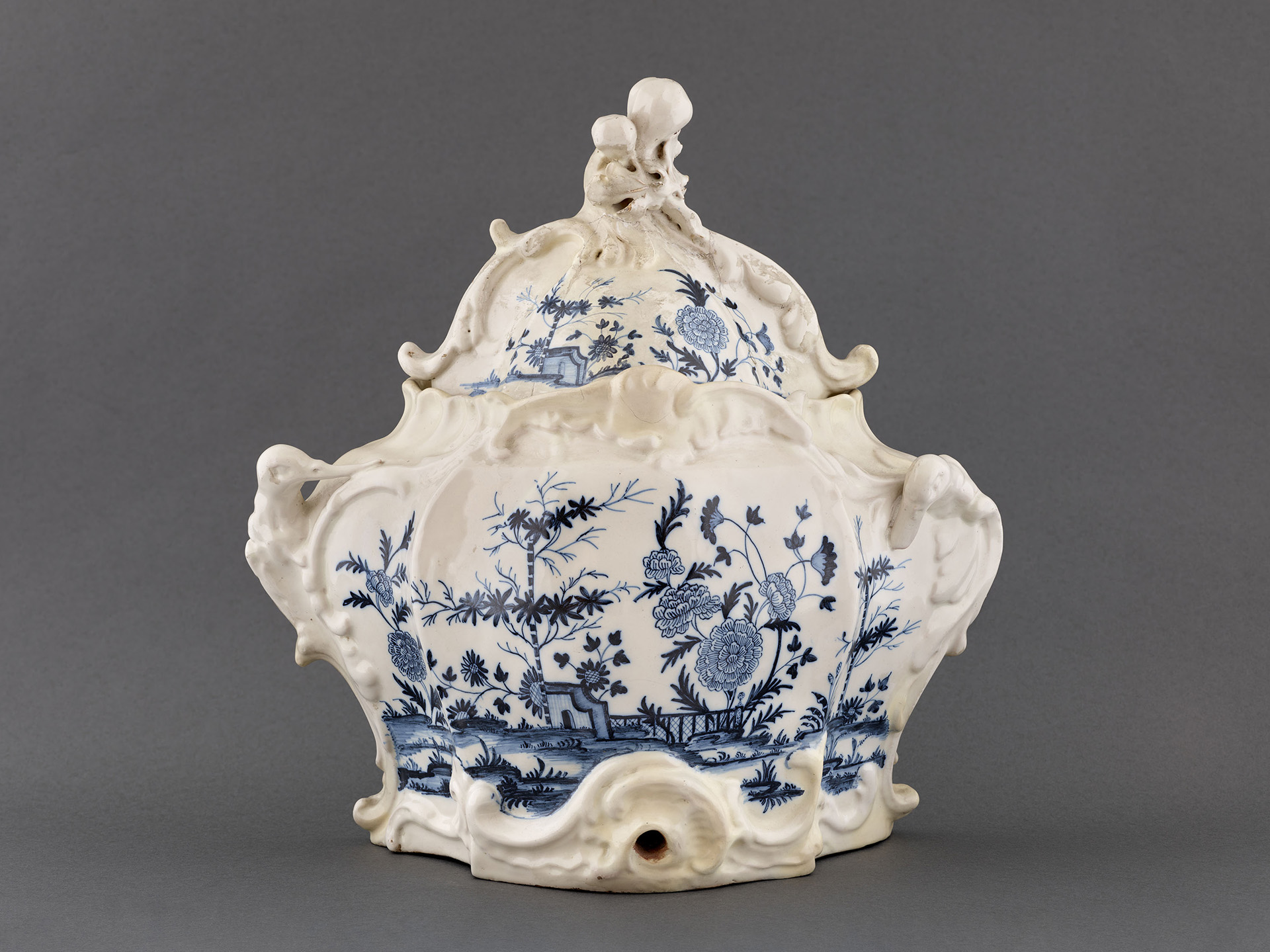
Faïencerie Gaspard Robert (?). Marsella (Francia)
Aguamanile
18th century
WORK INFORMATION
Ceramic, blue-decorated earthenware, height: 29.5 cm
Gaspard Robert (1722-1799) was the son of a granddaughter of Joseph Clérissy, owner of the first pottery factory in Marseilles. From an early age he worked in the workshop of his stepfather, André Estieu, until he set up his own workshop in the same district in 1753. There he developed his own earthenware production in which a large number of apprentices worked. It was a cheap but highly qualified workforce, as most of the artists had been trained at the Académie des Beaux-Arts. In 1767 he obtained authorisation to produce porcelain in his workshop, making him the only porcelain specialist in Marseilles. In recognition of this, on 2 July 1777 he was visited by the Count of Provence, the future Louis XVIII, and in 1789 he was elected deputy of the Third Estate on behalf of the ceramists. In his decoration he mainly used sepia, green or pink chiaroscuro, plant motifs and polychrome landscapes. As was customary in the decoration of porcelain, Robert regularly applied gold ornaments which he combined with the polychrome.
Stylistically, this aquamanile features Rococo-era motifs derived from rocaille, which were common in the Marseilles workshops. Oblong in shape, it is decorated with scrolled appliqués in relief that form borders at the top and bottom of the receptacle, as well as on the side handles that are finished in the shape of a bird. The spout where the tap is inserted for pouring liquids is also surrounded by a scroll. The lid is decorated with scrolls in relief and a knob in the shape of fruits. The blue chiaroscuro pictorial ornamentation is entirely oriental. It depicts a garden with chrysanthemums and almond trees arranged in an elegant asymmetrical pattern, characteristic of oriental porcelain.

